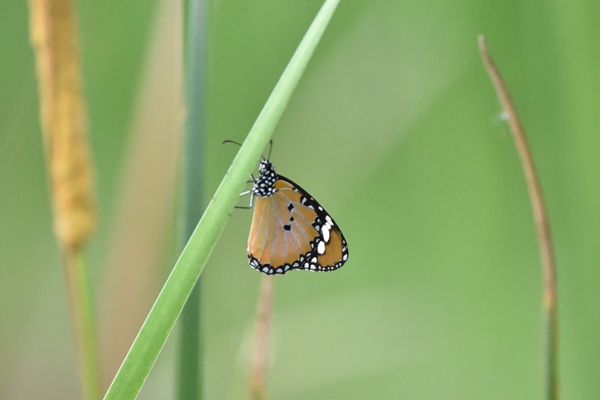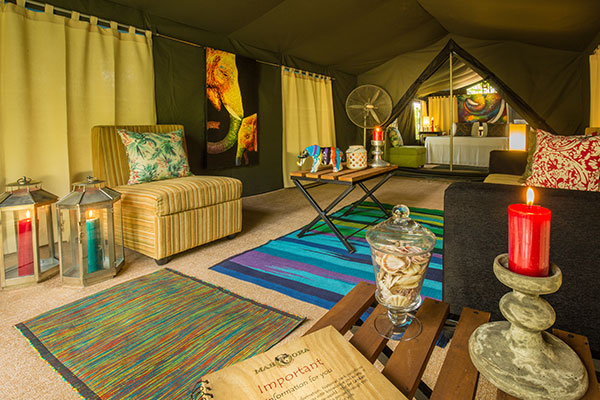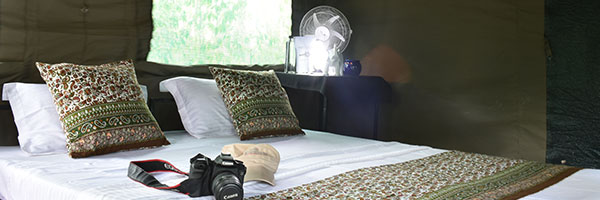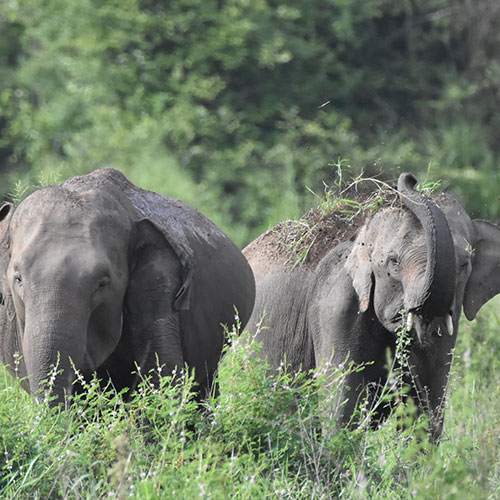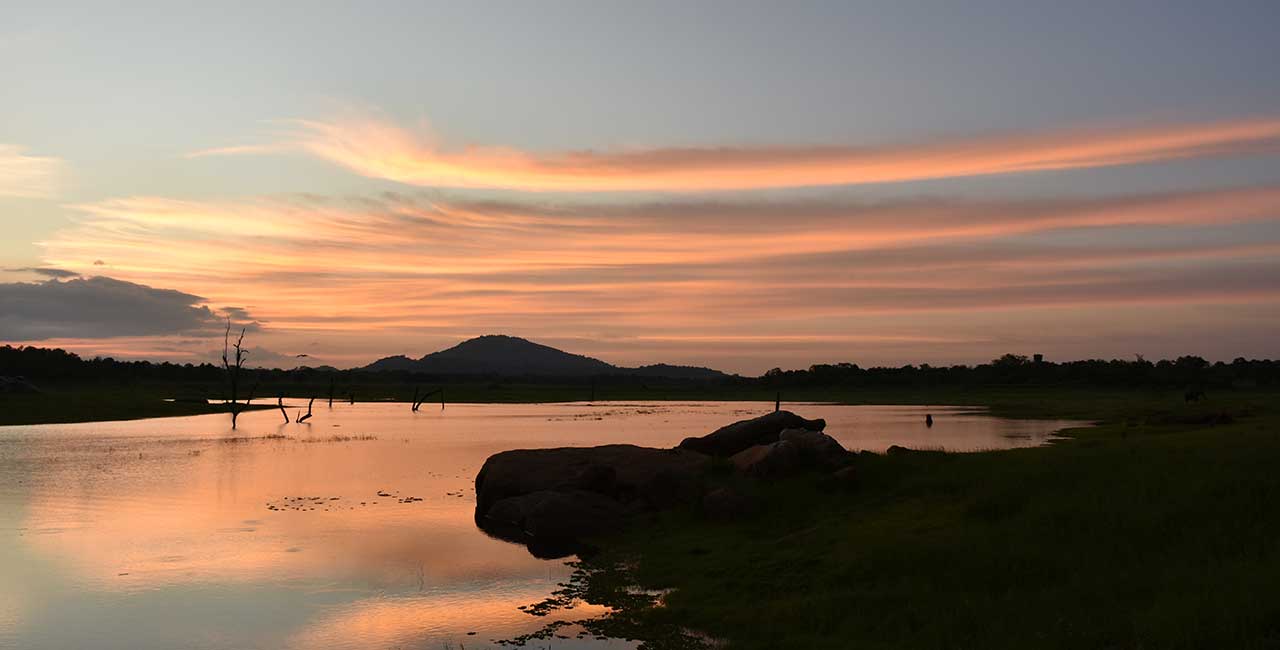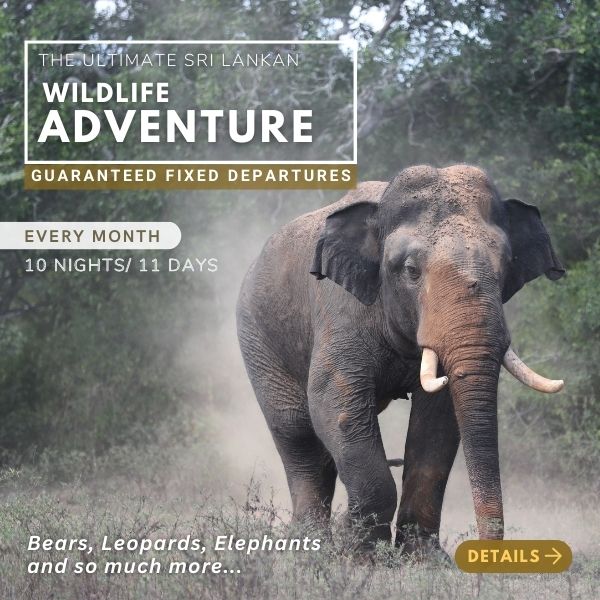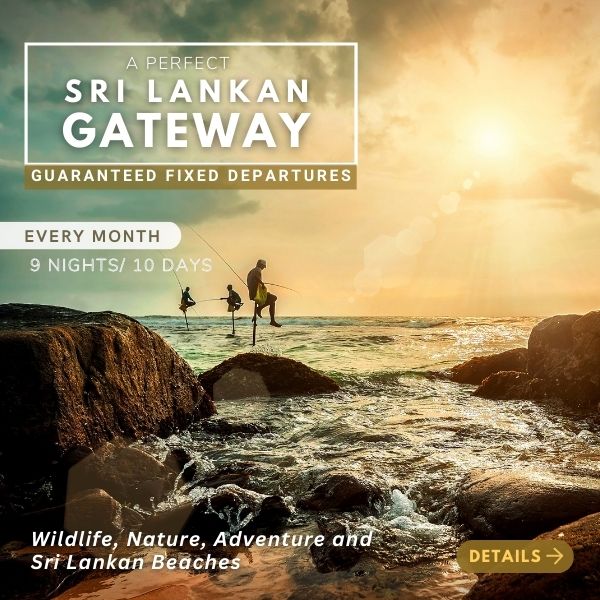Wild breakfasts and wilder bathrooms at Yala National Park Part II
08.01.2020
Our safari camping experience began in Katharagama, on the edge of one of the lesser visited zones of Yala National Park. The Yala safari we went on was simply awesome with some amazing animal sightings including leopards, eagles, deer, crocs, mongooses, a sloth bear, civets… well, the list goes on and on. We eventually stopped at a picnic site by a river to have our breakfast and that’s where the drama happened.
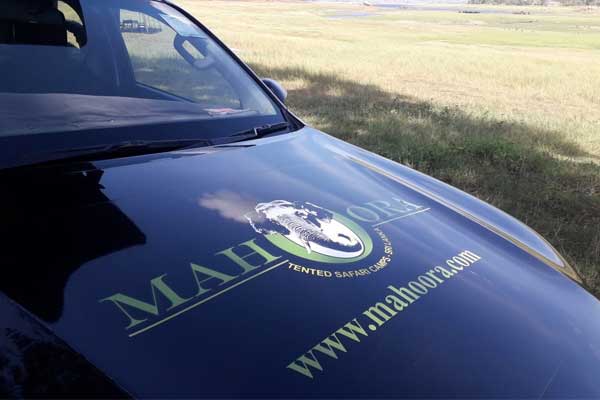
It was a picturesque location which was further enhanced by the fantastic breakfast spread before us - by the way, the food experience at Mahoora was amazing right throughout our stay! My wife, Talia, and I spent a few minutes wading in the river taking in our surroundings and simply enjoying being out here on our personalised safari experience. The cool water gurgling around our legs had the usual effect it has on people and we both headed to the washrooms that were located a little way away from the picnic site. It was at this moment when the park experienced the screech of talius dramaticus AKA my wife! Birds fled the treetops, leopards slunk into the bushes, water buffalos sank further into the mud and crocodiles slithered into the depths of the lakes. What manner of horror must have befallen talius dramaticus? A gigantic sloth bear dropping from the ceiling? A previously undiscovered man eating species of peacock? The Yeti? No… it turned out to be a… tiny common house spider.
I gently shooed the poor creature away and rescued the petrified spider as well. I was then tasked with ensuring that the other stalls did not contain anymore traces of anything arachnid. Which I faithfully did. I can truthfully say there were no more spiders. However, in my defence, no one said anything about checking for frogs. Now, to be fair to Talia, it can be unnerving for anyone to have frogs turn up in the water being flushed down a toilet. But that’s still no reason to justify breaking down the door and knocking me down in the process to make a quick getaway just because Kermit the Frog and his nephew made an appearance. However, it’s a good thing she didn’t stick around to investigate the loo further, because it turned out that a whole tribe of frogs, not just the two she saw, had taken up residence in the cistern and were not too pleased at being evicted by the flush. As we headed back to camp, I did try to make light of the situation with some well constructed puns, but unfortunately they were not received well by talius dramaticus. All in all, it was a super day out and of all the Yala safari camps out there, I’m glad we chose to stay at Mahoora!
A crash course to speaking Wild Boar
08.01.2020
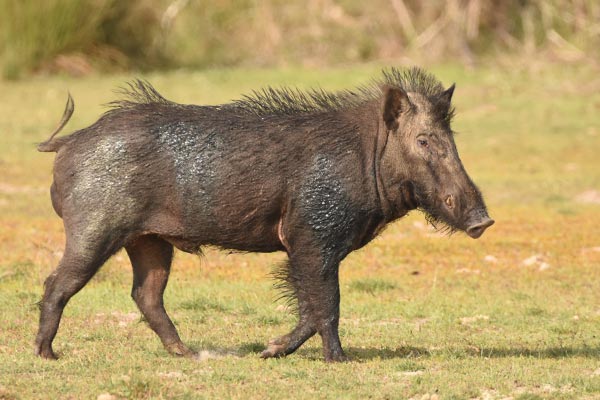
Five things you didn't know about the Indian Peafowl
13.12.2019
A safari in Sri Lanka will take you through the gamut of wildlife – from claws and fins, to antennas and fluorescent-coloured feathers! You can observe wildlife in Sri Lanka either on a Sri Lankan Safari inside National Parks scattered across the island, or even by simply being in the right place at the right time! Native to South Asia, India’s national bird – the Indian Peafowl – is a colourful sight whether you’re in Colombo or the dry zone! But, how much do you actually know about the proud bird? Here are five things you probably didn't know about the Indian Peafowl:
- All peacocks are peafowls, but not all peafowls are peacocks!
Birds of a feather… are collectively named together! Peafowl is the collective term for these birds, where the male species are called Peacocks and the female species are called Peahens. Offspring are called Peachicks. A family of peafowl however is called a bevy, but a group is called an ostentation, a muster, or even a party!
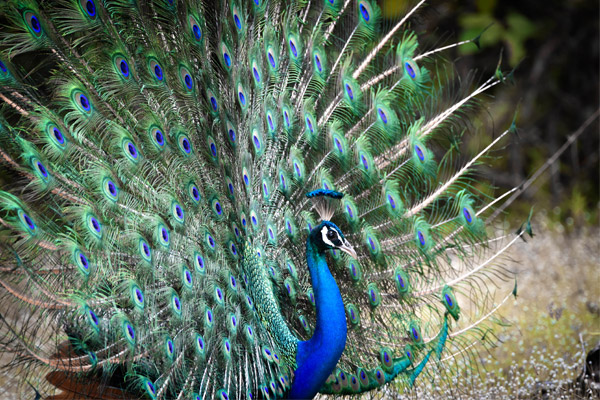
- hey did not wake up like this
Peafowls aren’t born looking as colourful as they do! Male peachicks don’t start growing their multi-coloured trains until they turn 3 years old. In fact, it’s hard to tell if a peachick is a peacock or peahen as they’re nearly identical to their mothers! However, after 6 months, male peachicks finally begin to change colour.
- They aren’t poached for their glorious feathers
Luckily, peacocks only shed their train per year at the conclusion of mating season, thus the feathers can be gathered and sold without these beautiful birds being hunted. The average lifespan of a wild peacock is around 20 years.
- They’re the biggest birds to fly!
A peacock’s tail feathers (train) can grow as long as 6 – 7 feet, and makes up around 60% in body length! These odd proportions however does not hamper a peafowl’s short-distance flight in any way! Jeep safaris are an ideal way to observe them in the wild.
- They come in colour, but also in white!
Due to selective breeding, it’s common for captive peafowls to resist the iridescent trend, in exchange for all white feathers! This is called leucism, and it’s caused by a genetic mutation resulting in loss of pigmentation. These white
A night walk to remember
05.11.2019
With torches illuminating the path, phone cameras set on night mode, and Arun the naturalist guiding the way… our Mahoora night walk was about to begin! Along with a plethora of other activities included in our stay at the Yala safari camp, this particular Mahoora Value Addition served as the next best thing to a jeep safari – a walking safari at night on the buffer zone of Yala National Park itself!
The nocturnal set of eyes which watched our every move was quite apparent, as Arun pointed a low beam at various hiding wildlife and explained what they were. To what we couldn’t quite make out, despite the spotlight and finger pointing, he took a picture of it using a DSLR and showed us the zoomed in version. We were lucky enough to spot everything from the Black-naped hare to the Slender loris, as well as diurnal wildlife from sleeping Purple sunbirds to dreaming Black hooded Orioles.
son.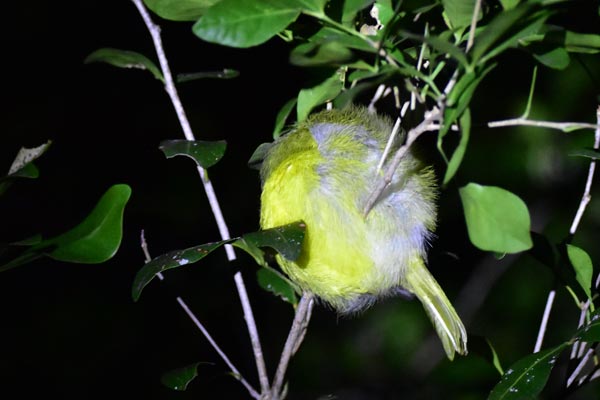
- Talia & Sirraj, guest overnight stay on 6th June 2019.
Bears of Sri Lanka and where to find them
10.09.19
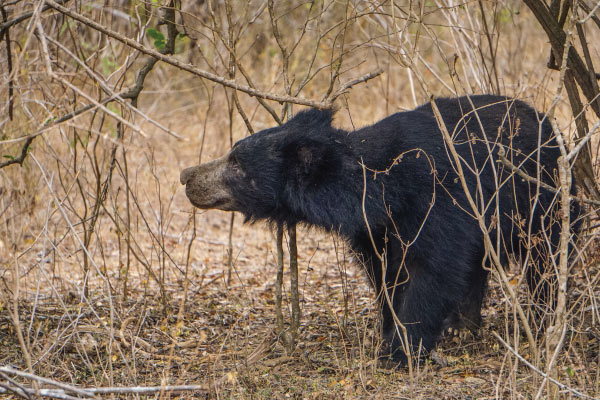
The playful sloth bear has tufted ears, a hairless snout, and is often seen curling its lips upwards and making faces! These bears are the only member of Family Ursidae in Sri Lanka, and are mostly solitary by nature. Though not the most majestic animal in the dry zone jungles, especially compared with other Sri Lankan wildlife like leopards and elephants, the sloth bear has a comical charm and is part of the ‘big five’ on wildlife tours.
Trapped inside Wilpattu National Park
08.08.2019
Let’s be clear, our Yala National Park safari had far better sightings than ‘5 jeeps’, and we had ample room in our Mahoora jeep to just utilise 1 jeep and not 5 – it was just me and my husband after all and booking an ‘elite’ package means we have the jeep to ourselves! It was really the fact that there were just 5 other jeeps, at most, on a Yala safari in Block 1, where usually there over 100! Yala National Park Block 1 is famed for having the highest leopard density per square km in the world, thus it’s generally the most heavily congested.
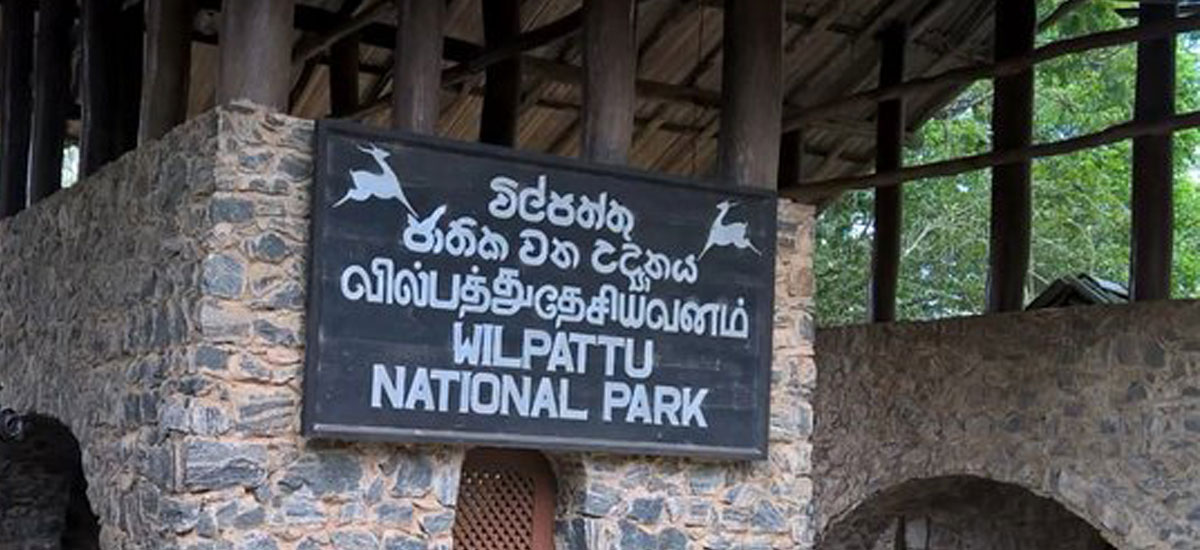
“There are stories you hear about the 26-year-long civil war, and there are stories you don’t. My story is just one of the many stories you don’t hear or read about, an insignificant story in the grand scheme of things. But when it happens to you, it isn’t just a story. It’s a part of you explained in a story.
See, I wasn’t always a Mahoora Naturalist. This happened during my time as a Park Ranger in Sri Lanka; I served as a ranger for 10 years at Wilpattu National Park, with the wartime and warzones overlapping. I remember it like it happened last week – it was the height of the war when I was doing my rounds looking for poachers. When wartime poachers sneak into the Park, you better believe they aren’t there for a Wilpattu safari experience! Camping for 3 – 4 days at a stretch, they would shoot any animal they see, dry the meat for food, and smuggle it back to base. My fellow ranger and I drove deep into the Park towards where we suspected a poacher camp to have been recently abandoned.
Still quite far from the red zone, we stopped the jeep at the sight of a fallen tree and got out to move it. But, it was a trap! We heard a gun cock and then shots were fired. The bark from the tree in my hands exploded and pieces flew everywhere. The poachers missed us by the inch of a tree bark! We fled on foot and took cover in the trees, but to our dismay I realised I’ve left my rifle in the jeep… the same jeep which was now kicking up a cloud of dust and speeding away!
With just the clothes on our back, we were forced to spend the night in the jungle. We didn’t even have a flashlight on us! Before the last light of day left us, we cautiously made our way to the canal region and slept there. You ask me if I was afraid of predators, but with more than a decade of experience in the wild, I can tell you that humans are the real predators! Cold and shivering in complete darkness, we took turns as the lookout. But neither of us slept a wink, despite the mounting fatigue.
As dawn breaks, we hear a jeep approaching. This was it. We were shot at and survived a night in the jungle, helplessly surrounded by carnivores and scavengers, but the real predators have just rolled up. With no more trees for cover, we crouched low at the base of the canal and hoped they wouldn’t see us. But it wasn’t the poachers coming back to finish the job, it was the army along with our ranger colleagues who radioed in our disappearance. We had survived, miraculously.
Although my experience – this story – changed me, it didn’t stop me from doing what I love. After the war ended, I hung up my Ranger hat and put on my Mahoora Camps one! Perhaps being a Mahoora Naturalist and birder, heavily armed with wildlife stories, isn’t as glamorous as being a wartime ranger looking for poachers… but hey you get to safely enjoy unlimited Wilpattu National Park Safaris and, most importantly, don’t get shot at!”
By Saranga, Naturalist at Mahoora Wilpattu.
The extraordinary safari of 5 jeeps
03.07.2019
Let’s be clear, our Yala National Park safari had far better sightings than ‘5 jeeps’, and we had ample room in our Mahoora jeep to just utilise 1 jeep and not 5 – it was just me and my husband after all and booking an ‘elite’ package means we have the jeep to ourselves! It was really the fact that there were just 5 other jeeps, at most, on a Yala safari in Block 1, where usually there over 100! Yala National Park Block 1 is famed for having the highest leopard density per square km in the world, thus it’s generally the most heavily congested.

Of course when you think of going on a ‘leopard safari’ exclusively, you’re bound to get a few persistent jeeps tailing you. The more enjoyable route is knowing there’s so much more to see in Yala than just leopards. With the help of our Mahoora Naturalist, jeep driver and wildlife tracker, we managed to catch a glimpse of the fuzzy sloth bear, wild boar, sambar, spotted deer, crocodiles, a host of endemic birds, an annoyed mud-crusted buffalo we fondly dubbed Mud Lord, grey langurs playing tag, and elephants in Yala – all in the first hour of our Mahoora Yala Jeep Safari!
The Drunken Bears of Yala and the Irresistible Trees of Palu
05.05.2019
Much like the lighting of the Olympic Flame to inaugurate the Olympic Games, the fruiting months of the Palu trees inaugurates the season of the Sloth Bear!
Yala National Park is amongst the oldest and best known of Sri Lanka's 15 National Parks. It covers approximately 1300 square kilometres and is home to a range of ecosystems found nowhere else in the country. There are 44 species of recorded mammals in Yala, which include the Sri Lankan Leopard, Sri Lankan Elephant and – sighted mostly during Palu season – the Sri Lankan Sloth Bear!
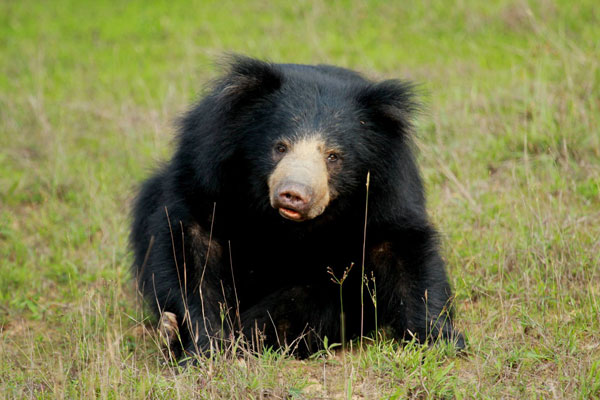
Typically during the months of May to July, a Yala National Park Safari may bring your camera the joy of sighting these furry mammals on or below the branches of Palu (Manilkara hexandra) trees during the daytime – a rarity as sloth bears are the most nocturnal of the bunch! You might even see these slow moving fur balls get ‘drunk’ as over-ripe Palu fruits ferment rapidly and is known to get bears a little tipsy! As Palu trees fill with golden fruits, ripe and scented within the dry zone jungles of Sri Lanka, it calls to Sloth Bears from afar like a siren – and if there is anything that's irresistible to a wild Sloth Bear, it's the scent of the succulent Palu fruits. These are quite sweet hence a refreshing energy booster especially during months of hot weather, making it a possibility to witness bears in a happy daze lounging on the branches – almost like the bear equivalent to chilling with mojitos in the summer!
These otherwise elusive bears – the only member of Family Ursidae in Sri Lanka – are found in dry zone forest habitats. Mostly solitary by nature, they amble through the forests, emitting noisy grunts and snorts while walking, and keep their nose close to the ground in search of insects and fresh fruit. During the fruiting season, fruits like Palu form a major component of their diet. Sightings during any Yala Safari during these months show an increased level of activity of bears closer to Palu trees.
How to spot a bear-ridden Palu Tree:
- The Palu or Ceylon iron wood, is a hardwood tree with a blackish-grey vertically furrowed trunk. The leaves are small and dark green with a broadly obovate shape. Flowers are yellow before they turn into fruit.
- Book an all-inclusive stay with Mahoora, which includes two safaris with a naturalist and tracker.
An Ode to Coconut Ice Cream in the Wilderness
07.04.2019
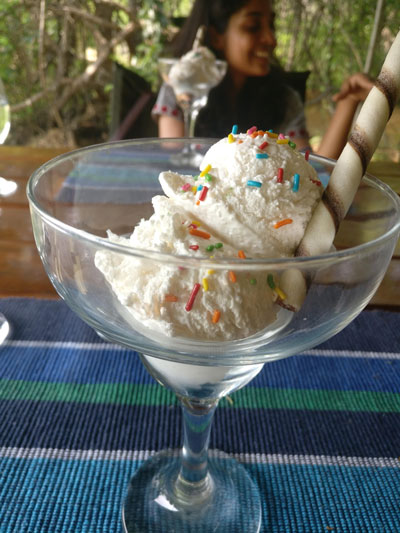
When the mid-afternoon sun hangs high,
And in the shade do sleepy animals lie,
What bliss it is to taste a lusciously cold dream,
Made entirely out of coconut ice cream.
The fluffy texture alike a summer’s cloud,
With soft notes of flavour hitting you aloud,
A dry zone forest your ice cream parlour,
Handcrafted with love by Mahoora Yala.
With one taste of this impossibly creamy dish,
You can’t help but preposterously wish,
For a bigger second helping of this coconutty glee,
Towering above you for as far as the eye can see!
Wings and Feet on the Star Deck
04.03.2019
